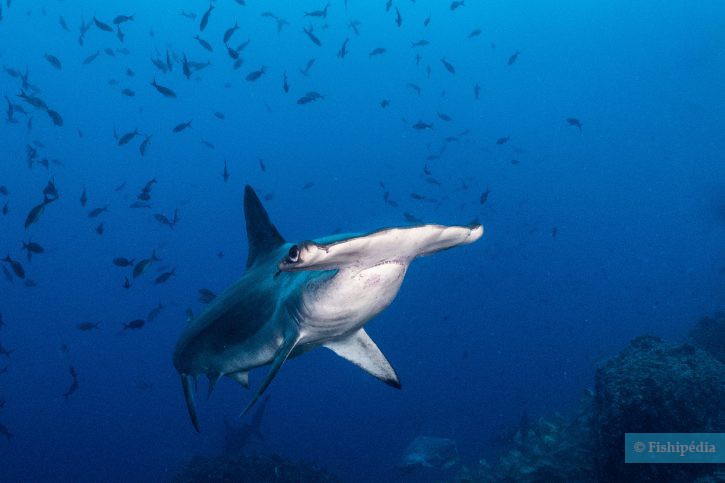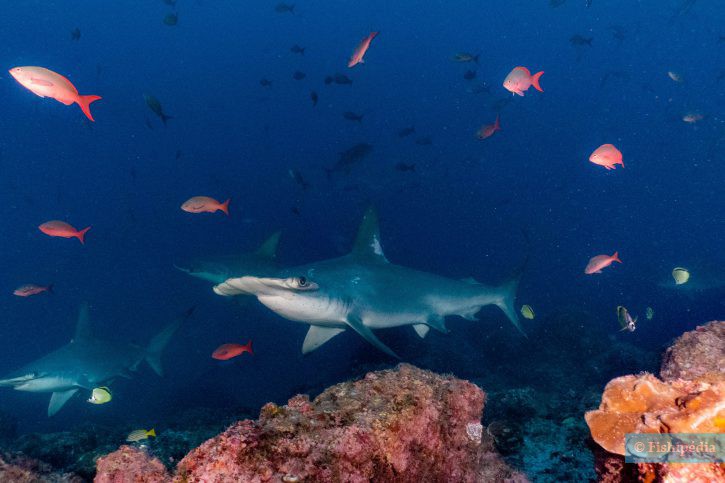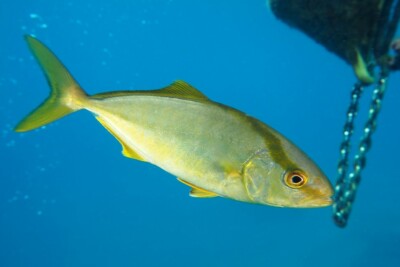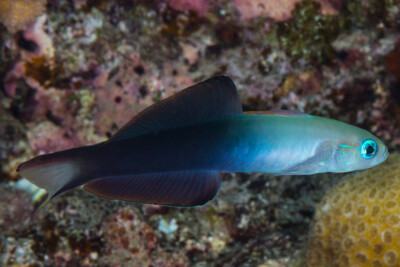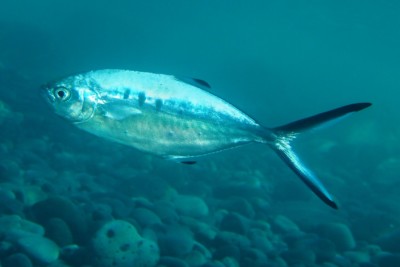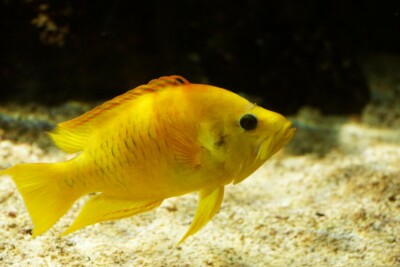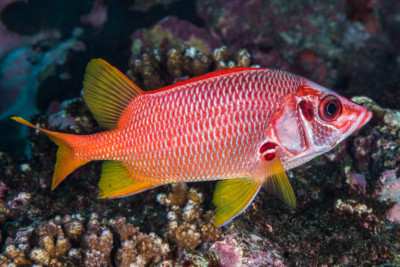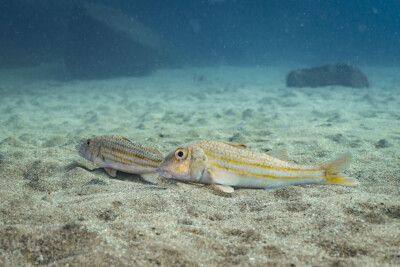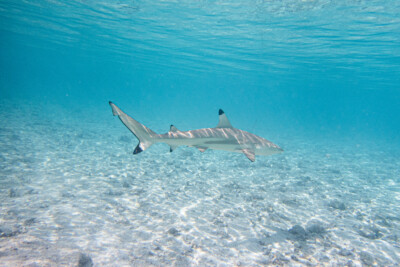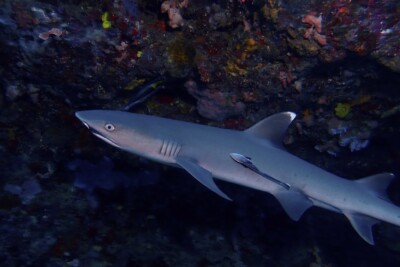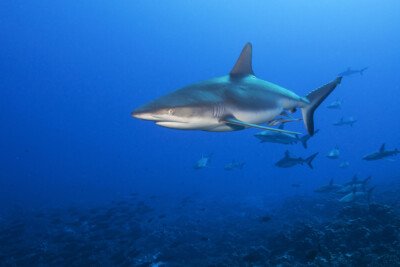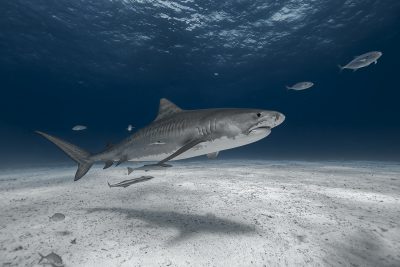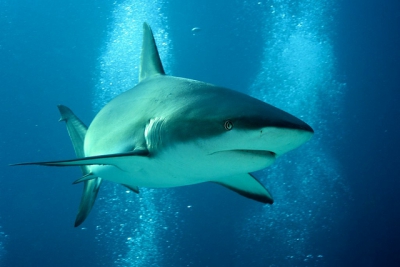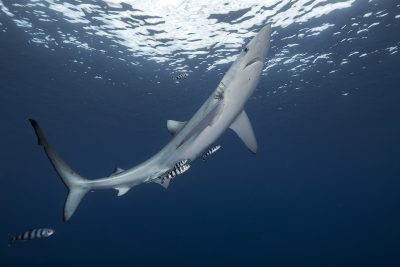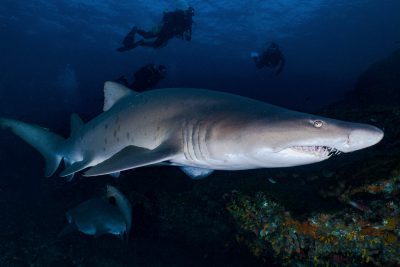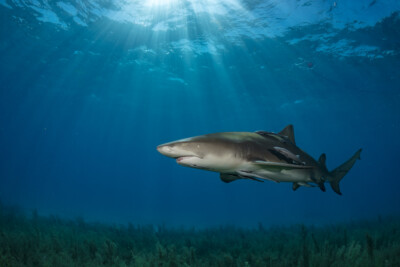Introduction
Sphyrna lewini is a semi-oceanic hammerhead shark found at all depths in tropical and temperate zones around the world. Despite its wide geographical distribution, this species is currently threatened.
Who is it?
Morphology
-
Type
-
Average size300 cm
-
Maximum size450 cm
-
Longevity35 year
-
ShapeRectangular
-
Patternvertical stripes
-
Type
-
Average size300 cm
-
Maximum size450 cm
-
Longevity35 year
-
ShapeRectangular
-
Patternvertical stripes
How to recognize This fish ?
The scalloped hammerhead shark is easily recognizable by its wide curved flat head and black tips on the pectoral fins. The dorsal fin is moderately high, the body is slender, the back is gray, and the belly is white.
Like most sharks, it has 5 pairs of gill slits. The caudal fin is heterocercal, with the lower part being shorter than the upper part. The upper part has a pronounced notch.
Sexual dimorphism
Males, like rays, have a pair of claspers. These are appendages resulting from the modification of the pelvic fins which allow the transmission of sperm to the female's cloaca. Males can only use one at a time.
Behaviour & Life cycle
-
dietcarnivorous
-
Sociabilityliving in shoals
-
territorialNo
-
Way of livingdiurnal
The scalloped hammerhead shark, living alone, in pairs, or in small groups, moves equally in oceanic and coastal areas. Although sedentary populations exist, it is mainly a pelagic species. Juveniles are often observed migrating in large schools in coastal areas.
This predator feeds on fish, cephalopods, and crustaceans. Its wide, flat head allows it to make tighter turns than other sharks, giving it a significant advantage during its hunts.
Reproduction
-
Reproductionovovivipare
-
Migratory speciesYes
This fish is ovoviviparous and reproduces in pairs at a size of about 1.5m for males and 2m for females.
After 9 to 10 months of gestation, this species can give birth to 12 to 41 juveniles. At birth, the young measure around 50cm.
Life-threatening species
-
VenomousNo
-
BiteYes
Although considered dangerous, it rarely attacks humans. It can be aggressive towards overly persistent divers and fishermen.
Origin and distribution
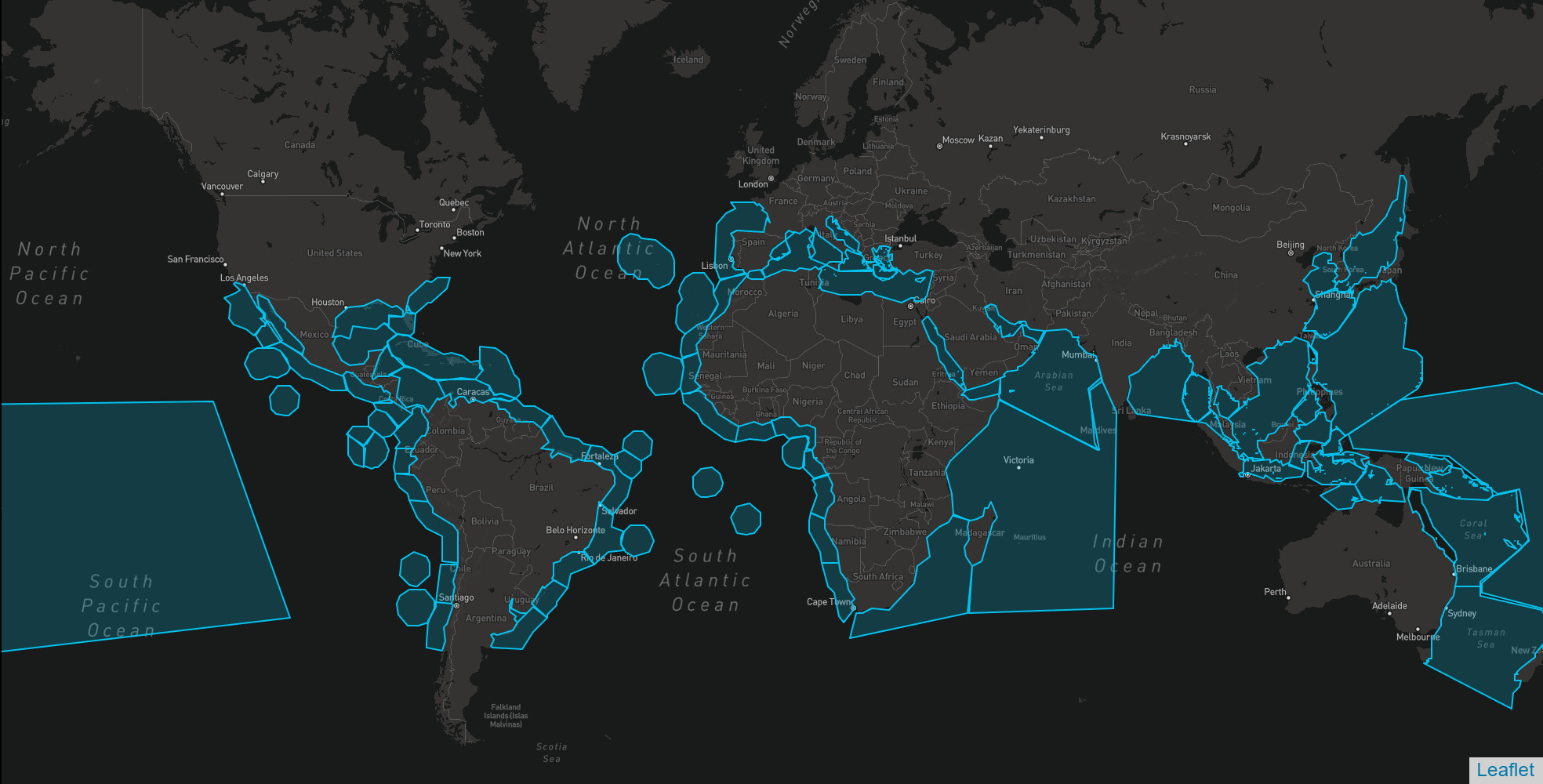
Conservation status of populations (IUCN)
What is its habitat?
Natural environment characteristics
-
Depth0 - 512 m
-
EnvironmentActive pelagic
Biotope presentation
The scalloped hammerhead shark is most often found at depths of less than 275m. However, it has been filmed by a camera baited at 512m.
Species of the same biotope
Fishkeeping
Not recommended
We do not recommend keeping this species in an aquarium. It has unpredictable needs which, if not met, generate significant stress, potentially leading to a shorter life expectancy, an interruption of its growth or the development of pathogens.
To go further
Sources & Contributions
Participation & Validation
The Fishipedia team and specialist contributors are committed to providing high-quality content. However, although the information comes from scientific sources or testimonials from specialists, the cards may contain inaccuracies.

Adrien Falzon

Benoit Chartrer
Translation
Translation done with the valuable contribution of our translators, who make this information available to a wider audience. We sincerely thank them for their commitment.
Scientific partners
Tags
#Carcharhinidae
#Sphyrna
#shark
#Bay of Bengal
#Gulf of Mexico
#Persian Gulf
#Great Barrier Reef
#mer d'Oman
#Tasman Sea
#Caribbean Sea
#Philippine Sea
#Sea of Japan
#Mediterranean Sea
#Red Sea
#South East Asian Seas
#Indonesian seas
#Atlantic Ocean: North Coast of Brazil
#Océan Atlantique Est Afrique - Bengala
#Océan Atlantique Est Afrique - Golfe de guinée
#Temperate Eastern Atlantic Ocean
#Océan Atlantique Est Afrique - Transition & Cap Vert
#Saint Helena
#Northwest warm temperate Atlantic Ocean
#Southwest warm temperate Atlantic Ocean
#Eastern tropical Atlantic Ocean
#Southwest Tropical Atlantic Ocean
#western Indian Ocean
#Desventuradas Islands
#Galapagos
#Océan Pacifique Nord Est Tempere Chaud
#Océan Pacifique sud-est tempéré chaud
#Tropical Eastern Pacific
#Western Tropical Pacific Ocean
#Oceania
#Canary Islands
#Réunion
Species of the same family
Species of the same biotope
